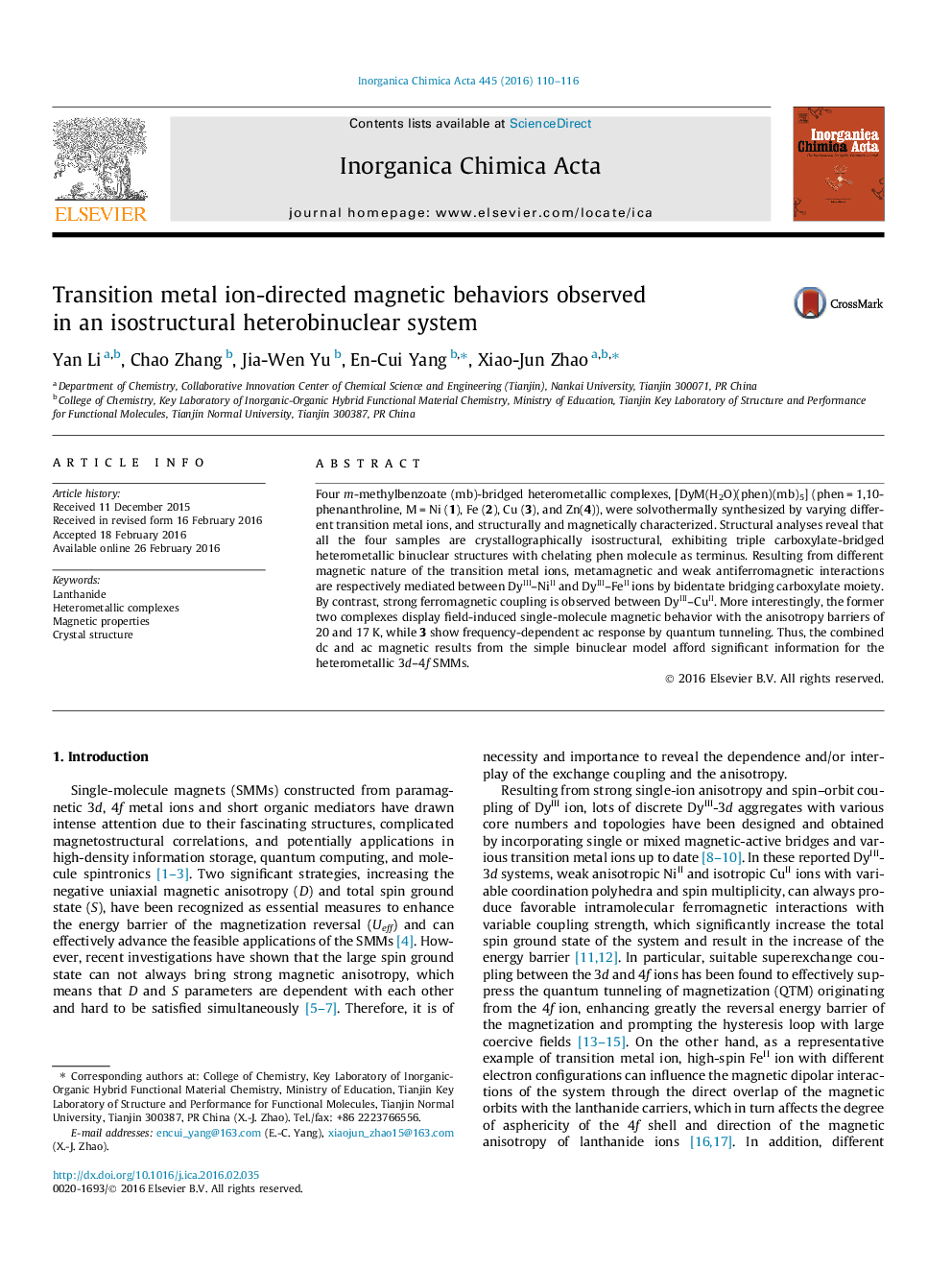| کد مقاله | کد نشریه | سال انتشار | مقاله انگلیسی | نسخه تمام متن |
|---|---|---|---|---|
| 1308221 | 1499144 | 2016 | 7 صفحه PDF | دانلود رایگان |

• Four {DyIIIMII} analogues with triple carboxylate mediators were reported.
• The {DyIIINiII}, {DyIIIFeII} and {DyIIIZnII} show field-induced SMM behavior.
• The {DyIIICuII} displays slow frequency-independent relaxation by quantum tunneling.
• These magnetic results afford significant information for the 3d-4f SMMs.
Four m-methylbenzoate (mb)-bridged heterometallic complexes, [DyM(H2O)(phen)(mb)5] (phen = 1,10-phenanthroline, M = Ni (1), Fe (2), Cu (3), and Zn(4)), were solvothermally synthesized by varying different transition metal ions, and structurally and magnetically characterized. Structural analyses reveal that all the four samples are crystallographically isostructural, exhibiting triple carboxylate-bridged heterometallic binuclear structures with chelating phen molecule as terminus. Resulting from different magnetic nature of the transition metal ions, metamagnetic and weak antiferromagnetic interactions are respectively mediated between DyIII–NiII and DyIII–FeII ions by bidentate bridging carboxylate moiety. By contrast, strong ferromagnetic coupling is observed between DyIII–CuII. More interestingly, the former two complexes display field-induced single-molecule magnetic behavior with the anisotropy barriers of 20 and 17 K, while 3 show frequency-dependent ac response by quantum tunneling. Thus, the combined dc and ac magnetic results from the simple binuclear model afford significant information for the heterometallic 3d–4f SMMs.
Four isostructural binuclear {DyIIIMII} analogues (M = Ni, Fe, Cu, and Zn) with triple carboxylate mediators were solvothermally generated. The {DyIIINiII}, {DyIIIFeII}, and {DyIIIZnII} samples with intramolecular metamagnetic or antiferromagnetic coupling show field-induced SMM behaviors with the Ueff values of 20, 17, and 10 K. By contrast, the {DyIIICuII} complex with strong ferromagnetic exchange displays frequency-independent slow relaxation by quantum tunneling.Figure optionsDownload as PowerPoint slide
Journal: Inorganica Chimica Acta - Volume 445, 24 April 2016, Pages 110–116